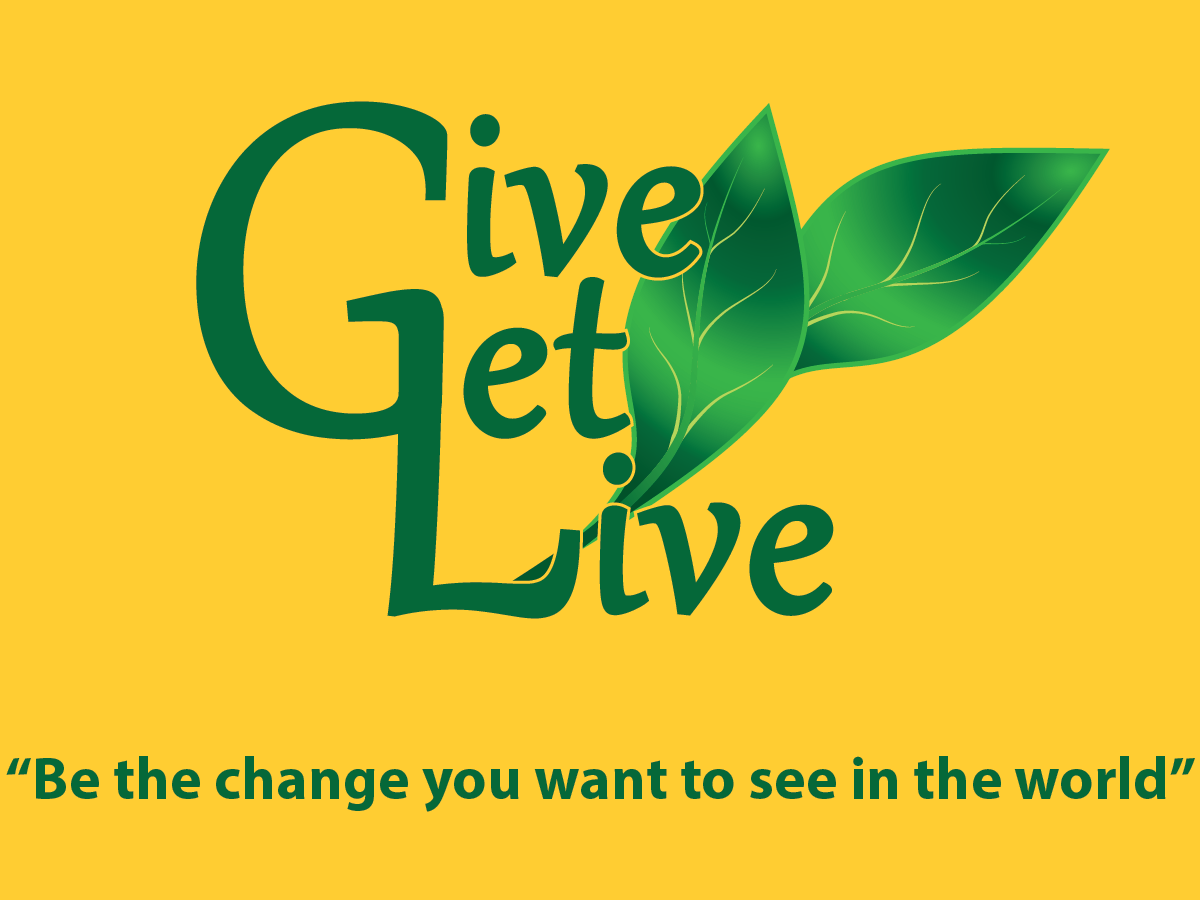

OVERVIEW
The world is becoming an increasingly globalized society. We know more about people in other areas of the world thanks to the speed at which news travels the Internet. The world’s communities have vastly disparate standards of living due to socio-economic differences and there is a justified desire to level the playing field and provide a safe and prosperous future for everyone, even within prosperous countries, where pockets of inequality still exist.
THE PROBLEM
The problem comes from the fact that while people want to do something of value for their community, they don’t always have the necessary skills or means to see those dreams brought to reality. How can we promote participation to help others achieve their goal and have an opportunity to achieve a personal goal, as well? Furthermore, how can we instill the leadership skills to have a global and lasting impact on society, in general?
RESEARCH
Understanding and Defining Social Entrepreneurship
To clarify our perspective of what social entrepreneurship is, we read up on efforts by various organizations around the world and successful projects that had been effective in creating a positive change and found that social entrepreneurship could be broadly defined as
Applying startup principles and practices to social, cultural, or environmental endeavors to achieve a positive, lasting impact on the world.
Interviews and Observations
In addition to our online research articles, we spoke with high school and college students, as well as employed young adults to assess their awareness of social entrepreneurship. We also visited with subject matter experts (SMEs) to learn from their experience in working with social organizations and understand the hurdles they face in accomplishing their missions. Finally, we observed local start up locations to draw analogous inspiration from the methods they applied to work towards success.
Student & Young Adults
 Student / Young Adult Interviewee
Student / Young Adult Interviewee
More importantly, they expressed an interest in contributing to such causes, though they doubted that they would know how to launch one themselves. Additionally, they understood that some method of funding, resources, and possibly volunteers, would be a necessary component of success.
Subject Matter Experts
 Naeem Randhawa
Naeem RandhawaIRUSA - Austin
Additionally, they stated that successfully growing the organization could be a hurdle, due to competing perceptions, philosophies, and agendas as leadership diversified and expanded.
Analogous Startup Research
 WeWork
WeWork(Startup Incubator)
Well established companies, such as Dell and IBM, also housed with the incubator to provide resources or on-site contacts. Their function was to help startups get or learn about cutting edge technologies. And at least one incubator offered an app to facilitate B2B services between companies within the incubator.
Takeaways
- Many students and young adults have their own vision of things they want to see changed in the world.
- Students and young adults are not intrinsically aware of “social entrepreneurship” as a concept or force for change, but they are aware of and actively participate in social causes.
- Students and young adults are involved in social causes, however, they are not clear that they can be the driving force behind social change.
- Students and young adults don't know how to go about setting up an organization or getting resources, funding, and participants.
- Startups pool and share resources, services, and knowledge to gain a collective advantage.
- Startups look to mentors to get their endeavors off the ground.
- Once a startup is launched, they sometimes have trouble scaling.
IDEATION
Brainstorming and Themes
From our takeaways, we were able to create the specific categories align our a social entrepreneur would need to possess or address to create a successful startup. The categories led to exploration of themes that would allow us to align the needs and goals of members with the insights from SMEs.
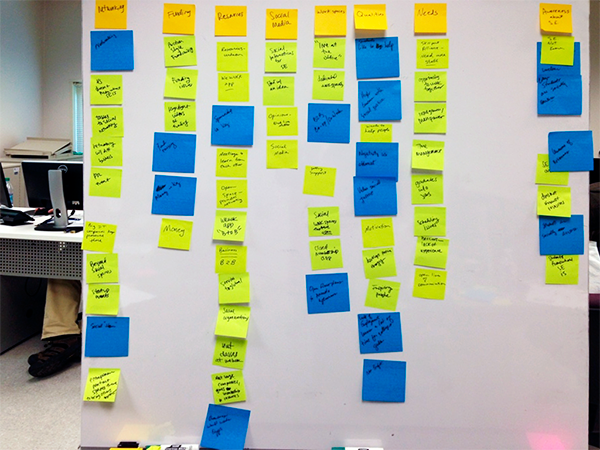 Categories
Categories
 Themes
Themes
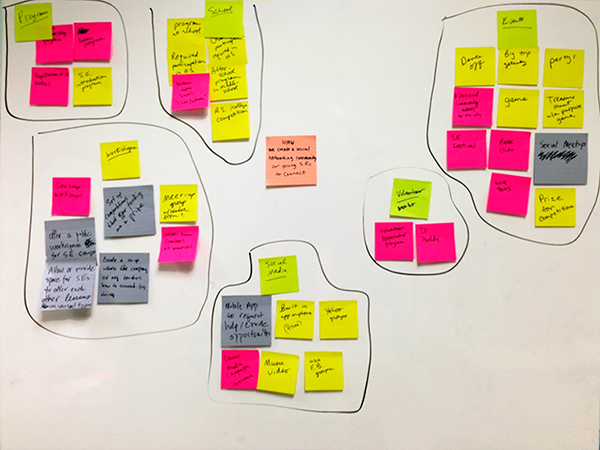 Themes Explored
Themes Explored
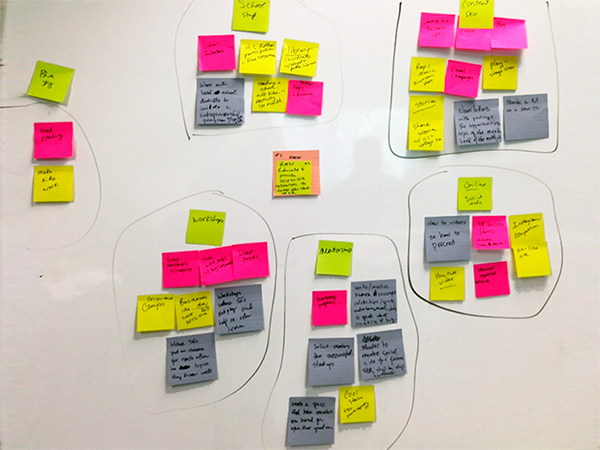 Themes Explored
Themes Explored
Those themes were then used to specific points of view to generate ideas that would satisfy the objective of enticing students and young adults to commit to the endeavor.
- How might we create a social networking community for young entrepreneurs to connect?
- How might we gather or provide accessible resources to foster new social entrepreneurial start ups?
- How might we educate young adults to be the change they want to see?
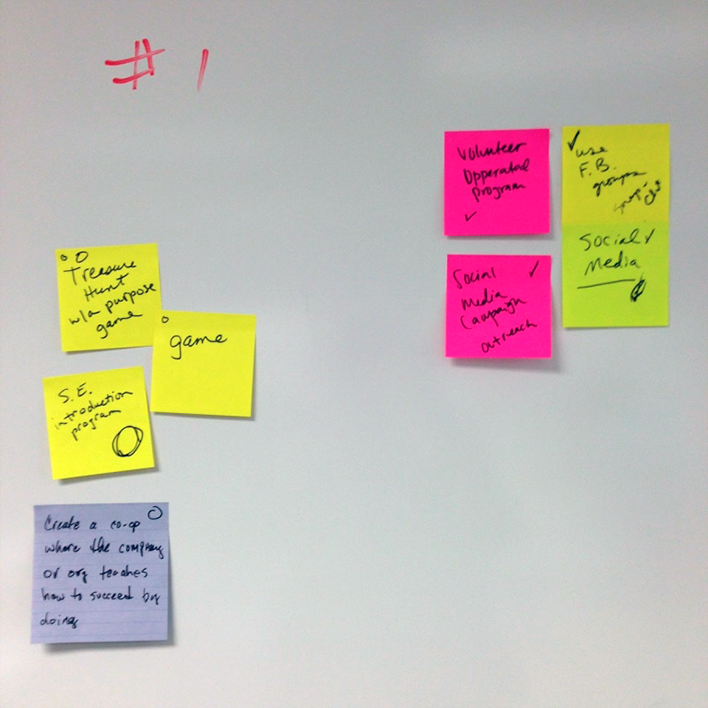 HMW Setup Social Networking
HMW Setup Social Networking
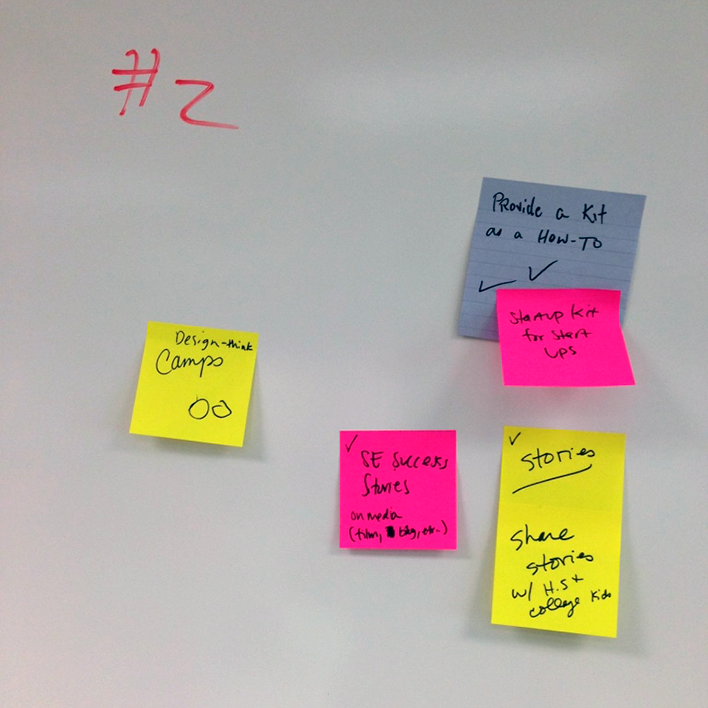 HMW Assist with Locating Resources
HMW Assist with Locating Resources
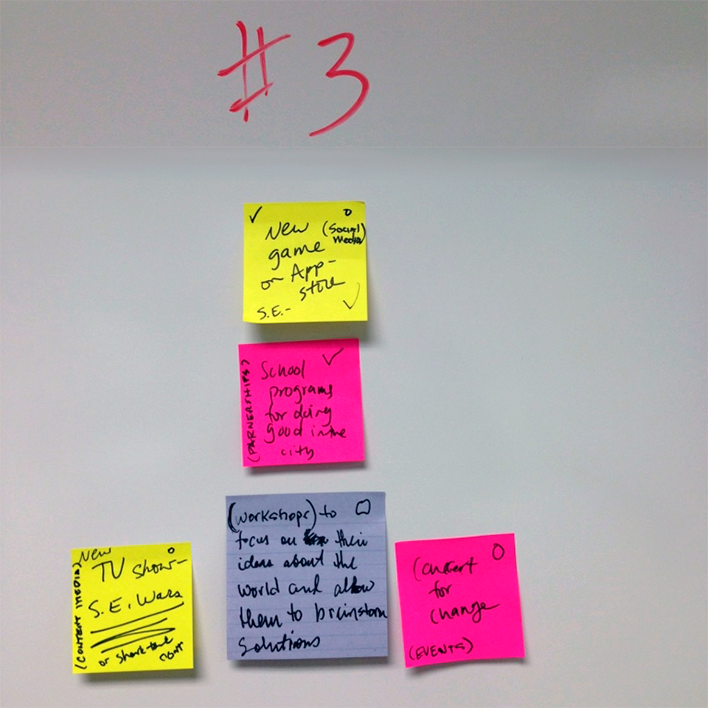 HMW Provide Skills & Education
HMW Provide Skills & Education
Proposed Solutions and a Final Selection
Based on the points of view listed we were able to determine three possible solutions to satisfy the requirements that would help young people to embrace social entrepreneurship:
Create a cooperative organization where people can share their ideas, volunteer, learn, lead their own projects, and fulfill a dream by doing. while being guided by a mentor.
Create a kit to guide people through the process of setting up their own social entrepreneurship organization, including guides on funding, acquiring resources, volunteers, project planning, and growth.
Create a social media app where people can inspire and challenge each other by setting a good example and posting to the hash tag #doinggood
As a group we voted to decide which of the three final concepts had the most potential. The idea of the kit was the least favored, however, we realized that rather than abandoning it, we could integrate it into a co-op as a manual. The co-op and the game both held merit, however, the reward of getting a dream or goal accomplished had the highest reward. Young people's ideas would not be dismissed as too lofty. Instead they would be guided to give them the best possibility to see that they could initiate change in the world.
We proceeded to create a journeymap for the concept and with iterative refinement, came up with the following scenario of how to help students and young adults achieve their goals.
Journeymapping
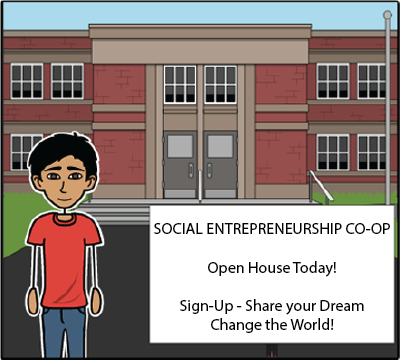 Pete signs up at the co-op,
Pete signs up at the co-op,
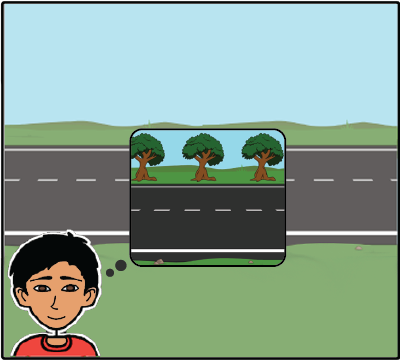 shares his dream,
shares his dream,
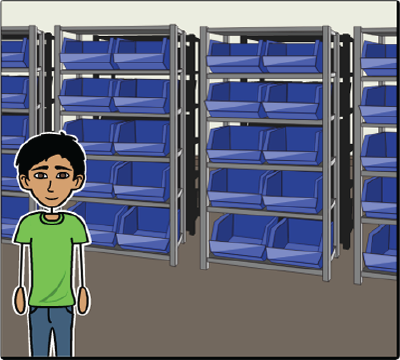 and gives his time,
and gives his time,
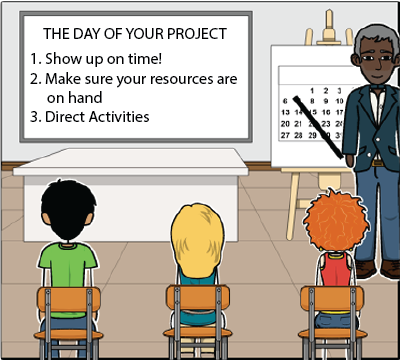 while learning the ropes
while learning the ropes
 to get his own project done
to get his own project done
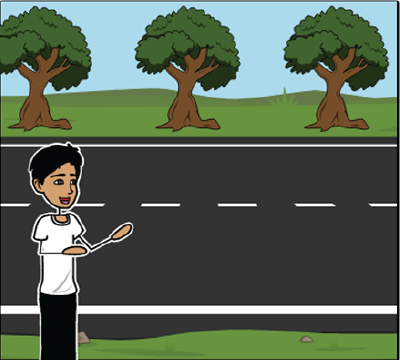 and live in a better world!
and live in a better world!
A High Level View of the Co-Op paths
Using system thinking we defined the process of flowing through each path available to members and mentors, alike. We wanted an overview of how a person can join the co-op and step through various tasks and activities to keep them engaged, especially when planning their own project.
When a project is completed successfully, they can volunteer with another project, continue learning, design another project, mentor someone else's project, or leave the organization to take the skills and knowledge they've acquired to a new organization or even their own start up.

Guiding the Member
We strive to show the members what opportunities there are for them to give of their time, show them how to get projects exposure and guidance to enable fulfillment, and live in a better world they're helping to create. It all starts with delving into their story and what has brought them to our social co-op. They start with some basic info and a narrative about their personal history and tell us about their goals, aspirations, and dreams. We ask about their expectations to align their dreams with our organization's capacity to help, and invite them to share their knowledge and skills to see how they can contribute. Any information can be updated via the dashboard.
 Learn more about the organization and it's opportunities.
Learn more about the organization and it's opportunities.
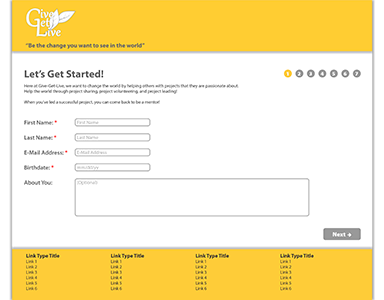 Register for a new account and tell us about your interests.
Register for a new account and tell us about your interests.
 Tell us what city you live in to explore local opportunities.
Tell us what city you live in to explore local opportunities.
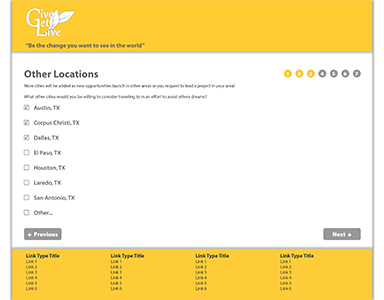 Tell us if you can travel to other destinations to help.
Tell us if you can travel to other destinations to help.
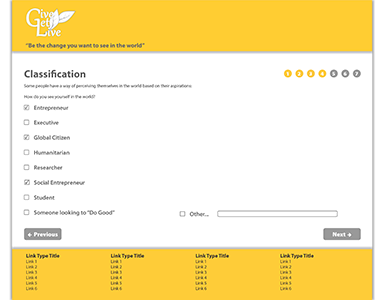 How do you perceive your self in the world you live in?
How do you perceive your self in the world you live in?
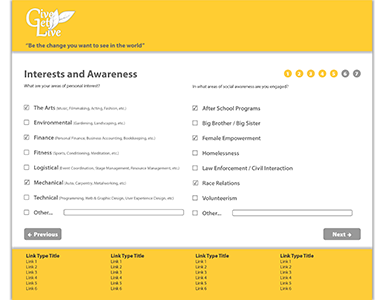 What are your interests? What social endeavors interest you?
What are your interests? What social endeavors interest you?
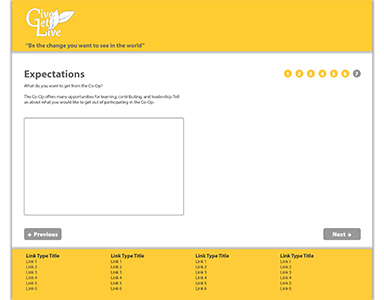 What do you expect to get out of your involvement with us?
What do you expect to get out of your involvement with us?
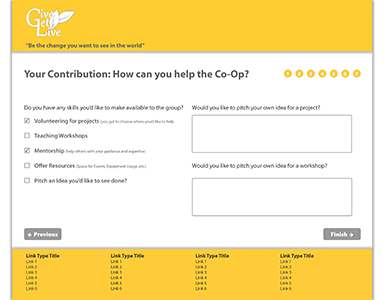 What skills and knowledge can you contribute to help others?
What skills and knowledge can you contribute to help others?
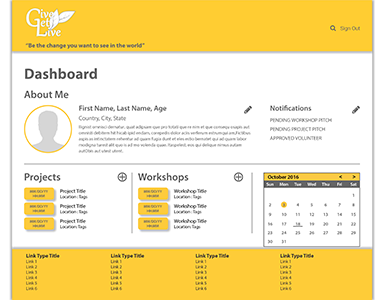 Manage your profile, projects, workshops, and schedule.
Manage your profile, projects, workshops, and schedule.
CONCLUSION
Feedback
After completing the preliminary design, we took the concept to students at a nearby campus to get feedback.
Overall, the concept was well-received primarily because the students liked that they could get something accomplished that would allow them to target their interests, rather than being forced into someone else's project. Most stated that they were unaware of any such program that would provide them the opportunity to do something they wanted to do. One reviewer offered a suggestion that badges be given on the profile, showing their list of accomplishments with the organization. They stated that it would show their growth as they proceeded through volunteering and course completion to show they could function as team leads for big projects or to fulfill a new role on a project.
While a few students initially balked at having to volunteer, some expressed that it would be a great opening not to feel pressured to come up with a project idea, up front. They saw the benefit of access to the leadership workshops until they were ready to pursue a project of their own.
Furthermore, they felt that gaining a valuable mentor and useful leadership skills was a huge plus, and would benefit them in the future.